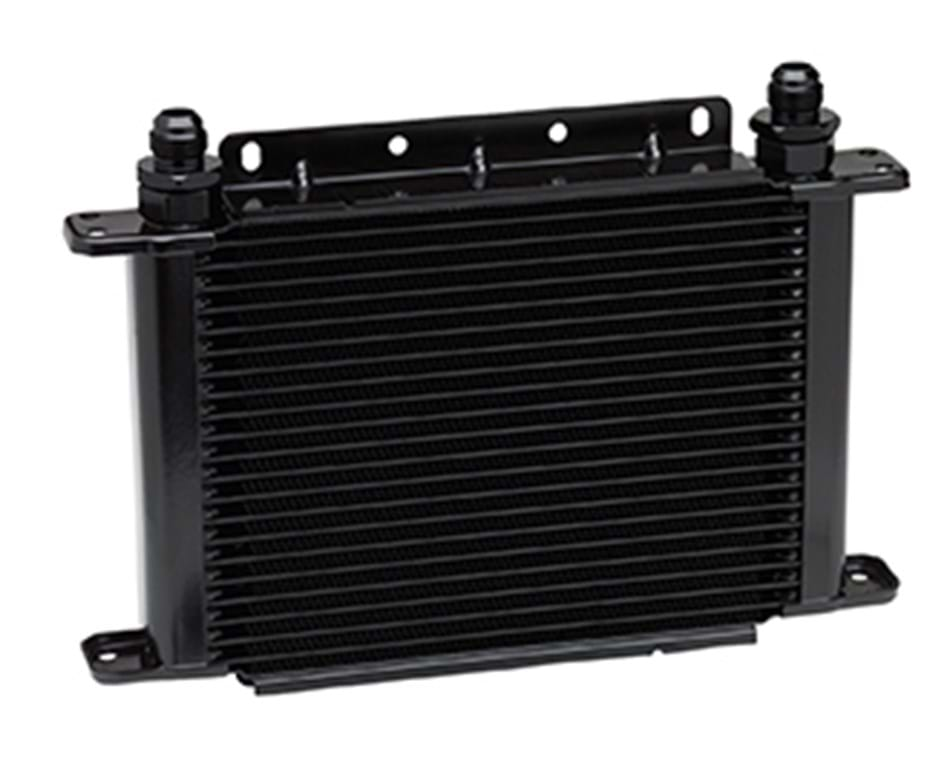Transmission Coolers

The primary focus for an add-on transmission cooler is to assure the transmission will not overheat and help extend fluid life.
The applications that we carry for transmission coolers are rated in series, with the O.E. cooler, for added cooling. It is recommended to place our transmission cooler after the O.E. cooler for best results. The add-on cooler is normally placed in front of the radiator. It should be placed where the most air will flow across it. If access to ram-air is limited, place the transmission cooler in front of the fan for maximum air flow.
If for some reason you are not going to use the O.E. cooler, you should choose the transmission cooler that will be the most efficient, and the largest, that will fit the available space. Typically, this is a cooler that is one to two sizes larger than the recommended heavy-duty cooler. You may want to consult a transmission repair shop before eliminating the O.E. cooler. If the vehicle is still under warranty, be sure that eliminating the O.E. cooler will not affect the warranty.
Questions have been raised about “over-cooling” the transmission fluid. Normally, this is not a concern. Some cases of overcooling involve snow plows. The snow and ice accumulated on the cooler, greatly reducing air flow. Modern transmissions have a built-in bypass that will cut off the flow to the cooler under severe cold conditions. A Hayden by-pass cooler can be used in these applications.
Many vehicles now feature CVT transmissions and use a liquid-to-liquid cooler for the transmission. While great for warming up the transmission fluid during cold starts, this does little to help cool the transmission fluid when ambient temperatures rise or a load in the vehicle is present. Coolant temperatures operate from 210°F to 220°F, which does a poor job cooling a hot transmission especially over long distances (road trips, vacations, etc) where the heat problem can compound and the resulting heat soak can put the vehicle into "limp-mode.” Adding an auxiliary cooler in line will help to bring the temperatures down and greatly extend the life of the transmission.
